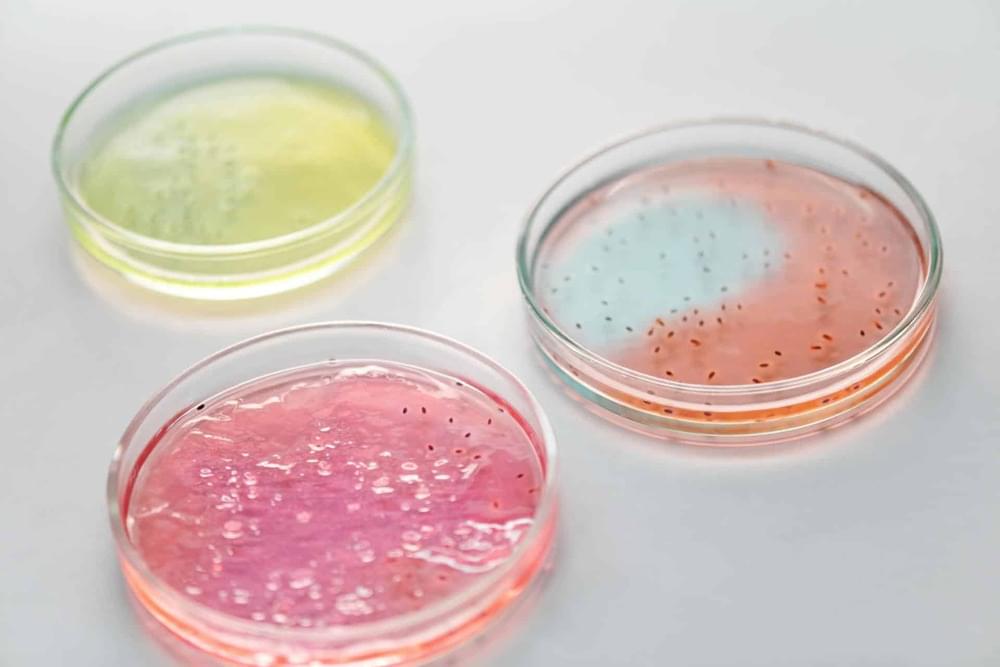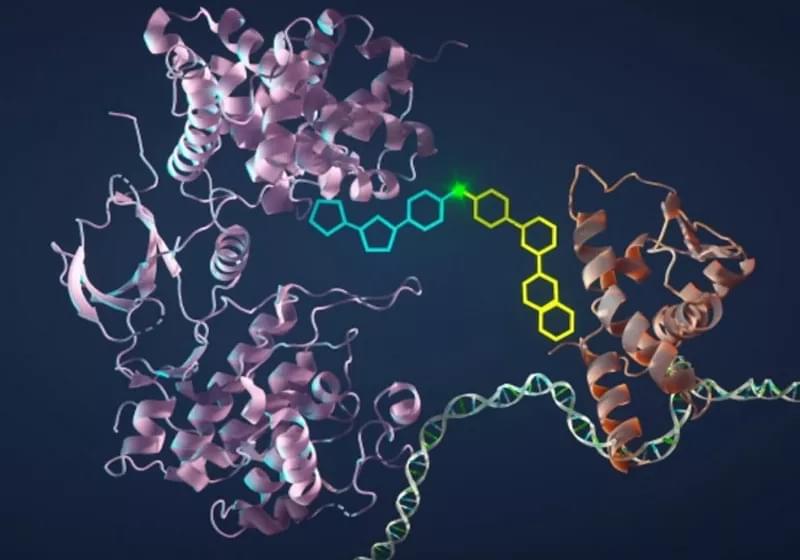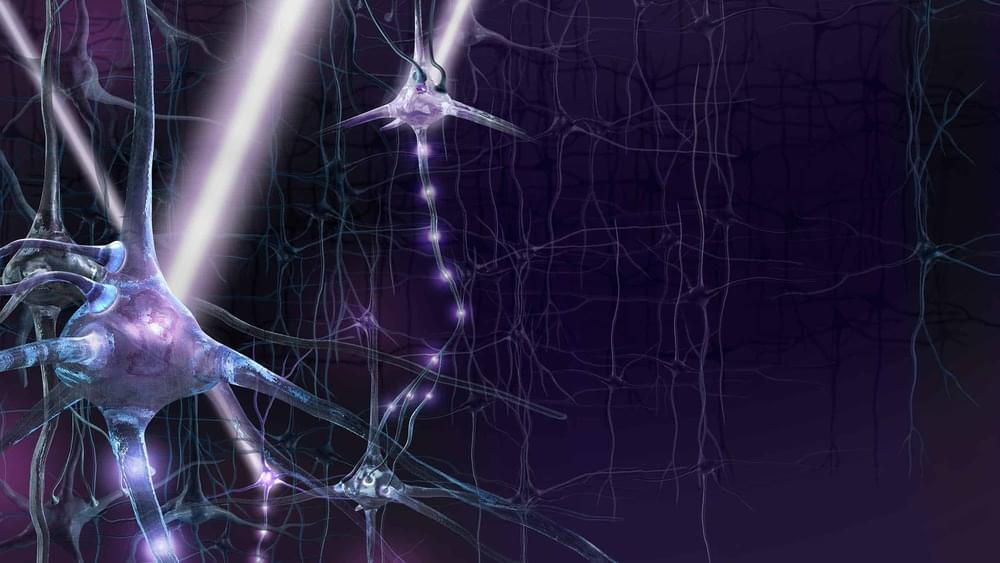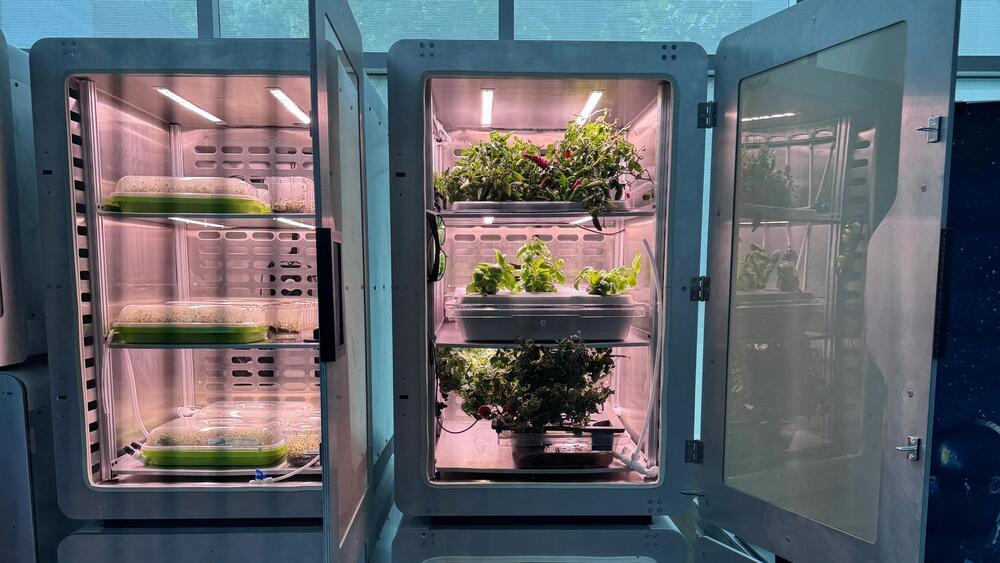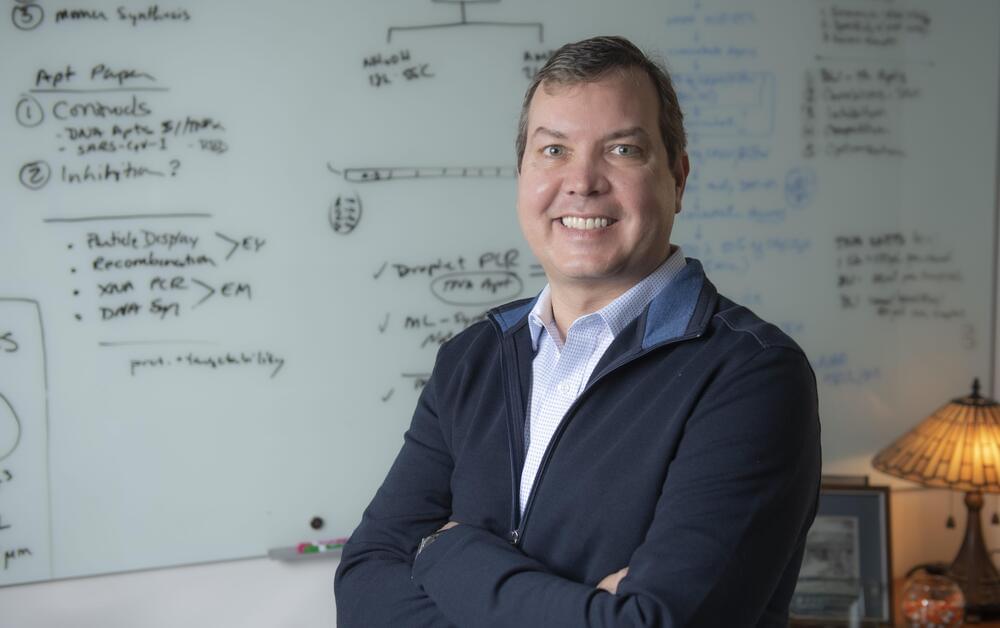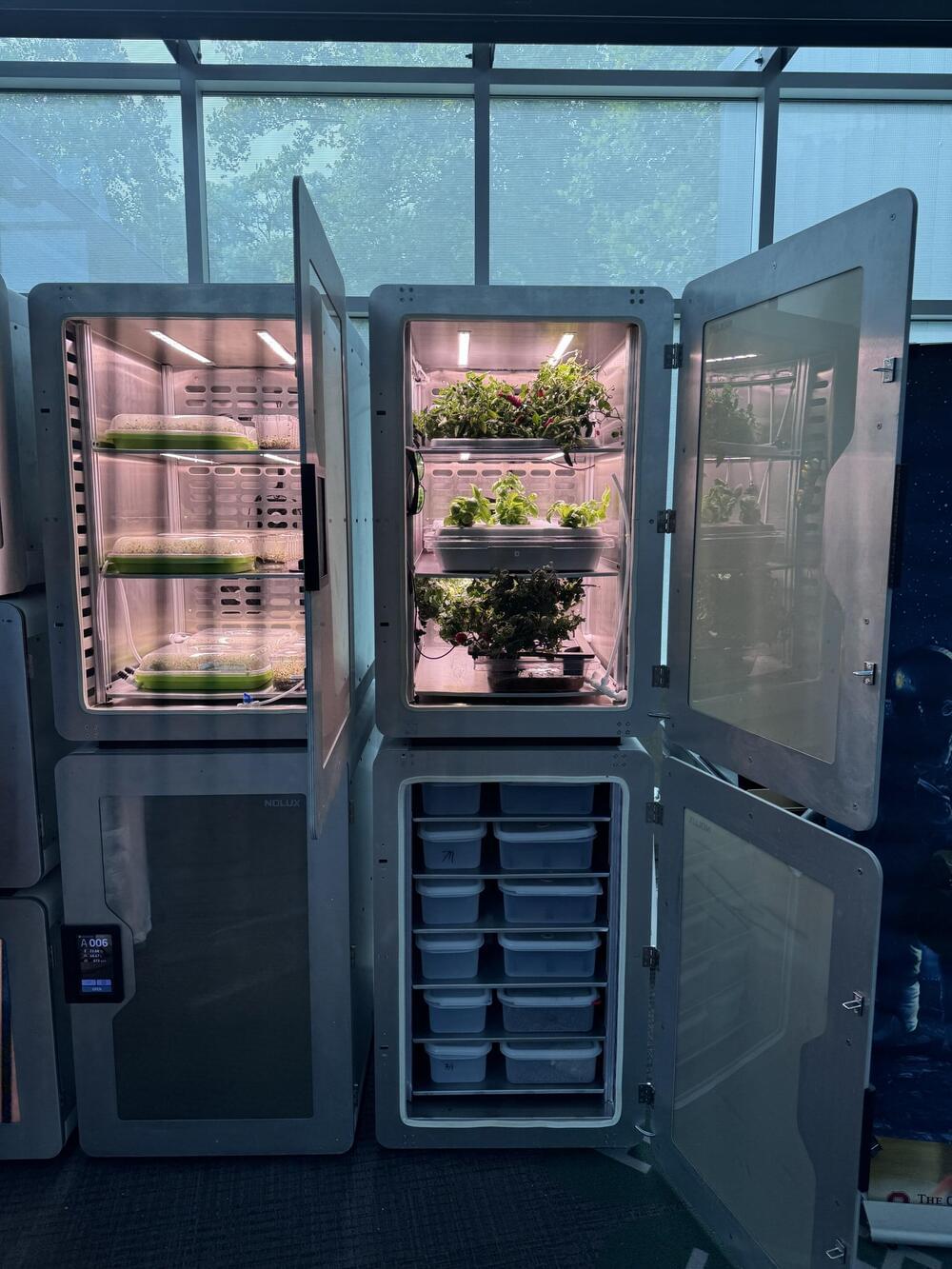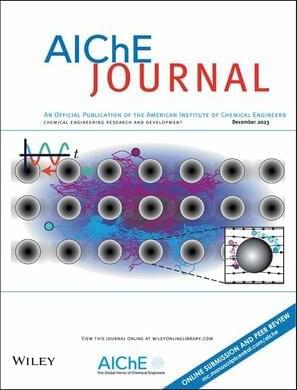Archive for the ‘bioengineering’ category: Page 8
Nov 5, 2024
Stanford researchers develop molecule that forces cancer cells to kill themselves
Posted by Rx Sobolewski in categories: bioengineering, biological, biotech/medical
The researchers’ recently published study describes a way to re-activate apoptosis in mutated cells, which would amount to forcing cancer to self-destruct through a bioengineered, bonding molecule.
Gerald Crabtree, one of the study’s authors and a professor of development biology, said he had the idea while hiking through Kings Mountain, California, during the pandemic period. The new compound would have to bind two proteins which already exist in the cancerous cells, turning apoptosis back on and making the cancer kill itself.
“We essentially want to have the same kind of specificity that can eliminate 60 billion cells with no bystanders,” Crabtree said, so that no cell gets destroyed if it isn’t the proper target of this new killing mechanism. The two proteins in question are known as BCL6, an oncogene which suppresses apoptosis-promoting genes in the B-cell lymphoma, and CDK9, an enzyme that catalyzes gene activation instead.
Nov 4, 2024
Physics for excited neurons
Posted by Jose Ruben Rodriguez Fuentes in categories: bioengineering, genetics, neuroscience, physics
“Badass”. That was the word Harvard University neuroscientist Steve Ramirez used in a Tweet to describe research published online by fellow neuroscientist Ali Güler and colleagues in the journal Nature Neuroscience last March. Güler’s group, based at the University of Virginia in the US, reported having altered the behaviour of mice and other animals by using a magnetic field to remotely activate certain neurons in their brains. For Ramirez, the research was an exciting step forward in the emerging field of “magnetogenetics”, which aims to use genetic engineering to render specific regions of the brain sensitive to magnetism – in this case by joining proteins containing iron with others that control the flow of electric current through nerve-cell membranes.
By allowing neurons deep in the brain to be switched on and off quickly and accurately as well as non-invasively, Ramirez says that magnetogenetics could potentially be a boon for our basic understanding of behaviour and might also lead to new ways of treating anxiety and other psychological disorders. Indeed, biologist Kenneth Lohmann of the University of North Carolina in the US says that if the findings of Güler and co-workers are confirmed then magnetogenetics would constitute a “revolutionary new tool in neuroscience”
The word “if” here is important. In a paper posted on the arXiv preprint server in April last year and then published in a slightly revised form in the journal eLife last August, physicist-turned-neuroscientist Markus Meister of the California Institute of Technology laid out a series of what he describes as “back-of-the-envelope” calculations to check the physical basis for the claims made in the research. He did likewise for an earlier magnetogenetics paper published by another group in the US as well as for research by a group of scientists in China positing a solution to the decades-old problem of how animals use the Earth’s magnetic field to navigate – papers that were also published in Nature journals.
Nov 2, 2024
Farming in the Dark: How Electro-Agriculture Outpaces Photosynthesis
Posted by Genevieve Klien in categories: bioengineering, food, genetics, space, sustainability
Bioengineers propose “electro-agriculture,” a method that replaces photosynthesis with a solar-powered reaction converting CO2 into acetate, potentially reducing U.S. agricultural land needs by 94% and supporting controlled indoor farming.
Initial experiments focus on genetically modified acetate-consuming plants like tomatoes and lettuce, with potential future applications in space agriculture.
Revolutionary Electro-Agriculture
Nov 1, 2024
Team engineers New Enzyme to Produce Synthetic Genetic Material
Posted by Natalie Chan in categories: bioengineering, biotech/medical, genetics
Discovery advances development of new therapeutic options for cancer and other diseases. A research team led by the University of California, Irvine has engineered an efficient new enzyme that can produce a synthetic genetic material called threose nucleic acid. The ability to synthesize artificial chains of TNA, which is inherently more stable than DNA, advances the discovery of potentially more powerful, precise therapeutic options to treat cancer and autoimmune, metabolic and infectious diseases.
A paper recently published in Nature Catalysis describes how the team created an enzyme called 10–92 that achieves faithful and fast TNA synthesis, overcoming key challenges in previous enzyme design strategies.
Inching ever closer to the capability of natural DNA synthesis, the 10–92 TNA polymerase facilitates the development of future TNA drugs.
Oct 30, 2024
With ‘electro-agriculture,’ plants can produce food in the dark and with 94% less land, bioengineers say
Posted by Quinn Sena in categories: bioengineering, energy, food, genetics
The acetate would then be used to feed plants that are grown hydroponically. The method could also be used to grow other food-producing organisms, since acetate is naturally used by mushrooms, yeast, and algae.
“The whole point of this new process to try to boost the efficiency of photosynthesis,” says senior author Feng Jiao, an electrochemist at Washington University in St. Louis. “Right now, we are at about 4% efficiency, which is already four times higher than for photosynthesis, and because everything is more efficient with this method, the CO2 footprint associated with the production of food becomes much smaller.”
To genetically engineer acetate-eating plants, the researchers are taking advantage of a metabolic pathway that germinating plants use to break down food stored in their seeds. This pathway is switched off once plants become capable of photosynthesis, but switching it back on would enable them to use acetate as a source of energy and carbon.
Oct 30, 2024
Breakdown of polyethylene therepthalate microplastics under saltwater conditions using engineered Vibrio natriegens
Posted by Quinn Sena in categories: bioengineering, biological, health, sustainability
Bioengineered bacteria to eat plastic in seawater:3 Which in large quantities can eat all the plastic in the ocean:3 Yay face_with_colon_three
Poly(ethylene terephthalate) (PET) is a highly recyclable plastic that has been extensively used and manufactured. Like other plastics, PET resists natural degradation, thus accumulating in the environment. Several recycling strategies have been applied to PET, but these tend to result in downcycled products that eventually end up in landfills. This accumulation of landfilled PET waste contributes to the formation of microplastics, which pose a serious threat to marine life and ecosystems, and potentially to human health. To address this issue, our project leveraged synthetic biology to develop a whole-cell biocatalyst capable of depolymerizing PET in seawater environments by using the fast-growing, nonpathogenic, moderate halophile Vibrio natriegens. By leveraging a two-enzyme system—comprising a chimera of IsPETase and IsMHETase from Ideonella sakaiensis —displayed on V. natriegens, we constructed whole-cell catalysts that depolymerize PET and convert it into its monomers in salt-containing media and at a temperature of 30°C.
Oct 29, 2024
3D laser bioprinter designed for precise human tissue engineering
Posted by Dan Kummer in categories: bioengineering, bioprinting, biotech/medical, robotics/AI

A way to re grow new parts, perfect DNA match, eventually? Will take Agi / ASI to realize full potential, we ll see.
For this, the researchers have created a compact bioprinter to develop biological tissues with microfilament structures. He is now working to bring this technology to market.
Continue reading “3D laser bioprinter designed for precise human tissue engineering” »
Oct 29, 2024
Researchers discover underlying mechanisms that make CRISPR an effective gene editing tool
Posted by Dan Breeden in categories: bioengineering, biotech/medical
CRISPR/Cas9 is a gene editing tool that has revolutionized biomedical research and led to the first FDA-approved CRISPR-based gene therapy. However, until now, the precise mechanism of exactly how this tool works and avoids creating detrimental off-target effects was not well understood.
Oct 29, 2024
Michael Levin: What is Synthbiosis? Diverse Intelligence Beyond AI & The Space of Possible Minds
Posted by Dan Breeden in categories: bioengineering, biotech/medical, cyborgs, education, ethics, genetics, information science, robotics/AI

Michael Levin is a Distinguished Professor in the Biology department at Tufts University and associate faculty at the Wyss Institute for Bioinspired Engineering at Harvard University. @drmichaellevin holds the Vannevar Bush endowed Chair and serves as director of the Allen Discovery Center at Tufts and the Tufts Center for Regenerative and Developmental Biology. Prior to college, Michael Levin worked as a software engineer and independent contractor in the field of scientific computing. He attended Tufts University, interested in artificial intelligence and unconventional computation. To explore the algorithms by which the biological world implemented complex adaptive behavior, he got dual B.S. degrees, in CS and in Biology and then received a PhD from Harvard University. He did post-doctoral training at Harvard Medical School, where he began to uncover a new bioelectric language by which cells coordinate their activity during embryogenesis. His independent laboratory develops new molecular-genetic and conceptual tools to probe large-scale information processing in regeneration, embryogenesis, and cancer suppression.
TIMESTAMPS:
0:00 — Introduction.
1:41 — Creating High-level General Intelligences.
7:00 — Ethical implications of Diverse Intelligence beyond AI & LLMs.
10:30 — Solving the Fundamental Paradox that faces all Species.
15:00 — Evolution creates Problem Solving Agents & the Self is a Dynamical Construct.
23:00 — Mike on Stephen Grossberg.
26:20 — A Formal Definition of Diverse Intelligence (DI)
30:50 — Intimate relationships with AI? Importance of Cognitive Light Cones.
38:00 — Cyborgs, hybrids, chimeras, & a new concept called “Synthbiosis“
45:51 — Importance of the symbiotic relationship between Science & Philosophy.
53:00 — The Space of Possible Minds.
58:30 — Is Mike Playing God?
1:02:45 — A path forward: through the ethics filter for civilization.
1:09:00 — Mike on Daniel Dennett (RIP)
1:14:02 — An Ethical Synthbiosis that goes beyond “are you real or faking it“
1:25:47 — Conclusion.
